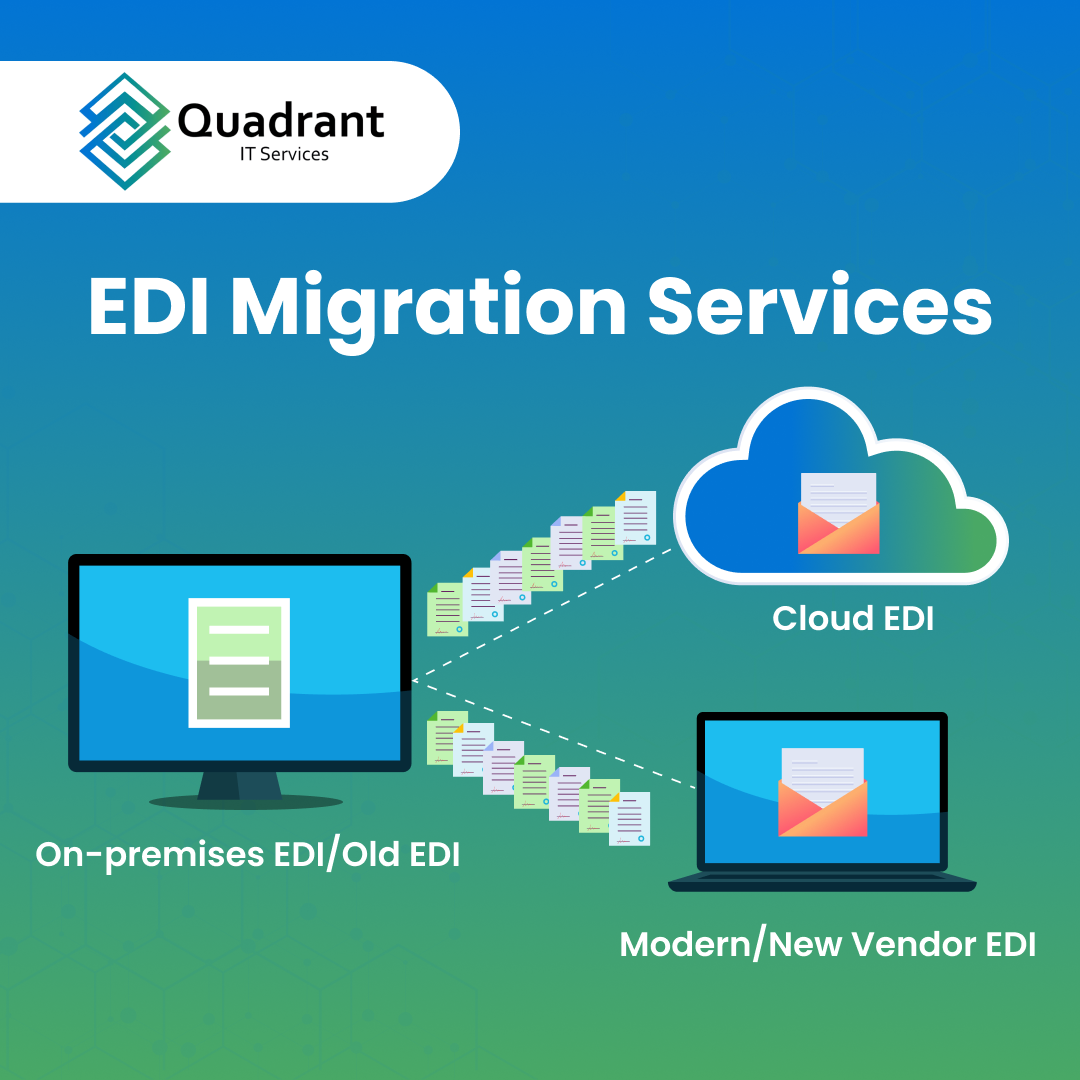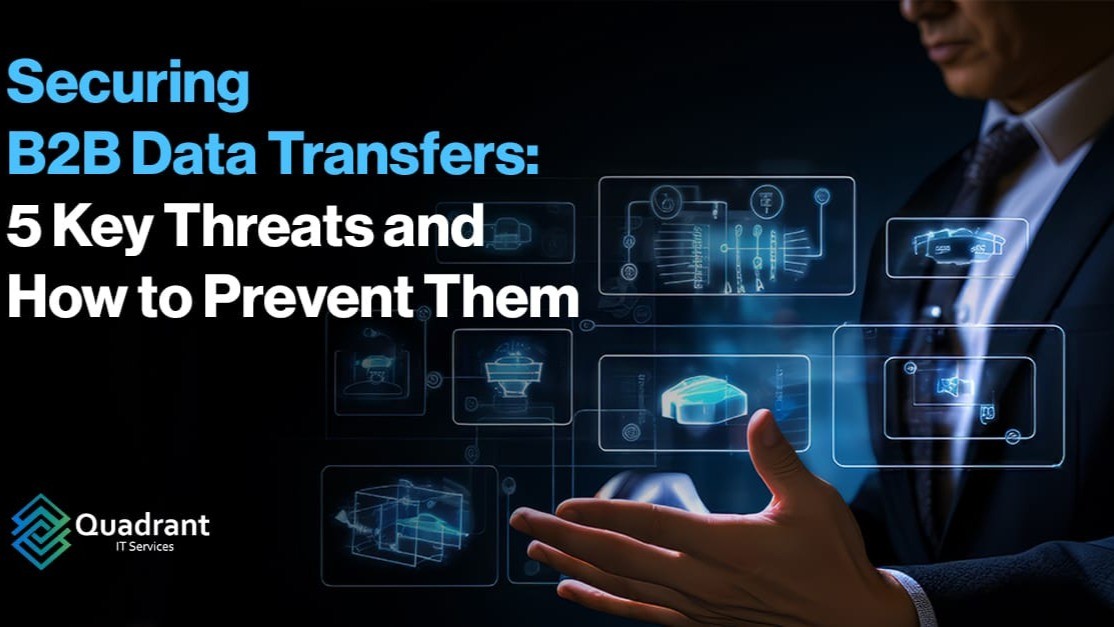EDI’s ability to streamline business processes, reduce costs, and improve accuracy through electronic document exchange has made it a vital tool for efficient and reliable data exchange. By ensuring compliance with industry standards, it facilitated faster transactions and enabled global collaboration. Due to various reasons, businesses migrate their existing EDI services to the system to a new system. However, in this migration process, businesses need to understand the complexities involved in EDI migration and work closely with experienced professionals to navigate the process effectively. Otherwise, it would affect B2B communication and create huge losses. In this blog, we shall discuss all crucial aspects of EDI migration that would help all businesses seeking EDI migration services.
What is EDI Migration?
To upgrade to a newer technology, improve system efficiency, comply with the latest regulatory requirements, or integrate with new business partners, businesses will attempt to migrate off their current EDI system to a new platform. By doing so, they enhance productivity, reduce costs, and stay competitive in an evolving business environment. This is called EDI migration.
It involves key stages such as assessing current systems, identifying goals and requirements for the new system, selecting the right technology and vendors, ensuring data integrity and security, etc. Now, we will discuss these stages in much more detail.
Key aspects of successful EDI migration
1. Defining the Scope
Our team of EDI experts evaluates the current EDI service providers, including hardware, software, data formats, and processes. In hardware, they review infrastructure supporting the current EDI system, including servers, network equipment, and communication devices. Evaluate their capacity, reliability, and compatibility with newer technologies.
In software, they assess the EDI software applications and tools being used, such as EDI translators, mapping software, and communication software, their version, features, and limitations, and identify any outdated or unsupported software components. Along with this, they will also examine the data formats and standards used for EDI transactions, such as ANSI X12, EDIFACT, or XML to evaluate their compatibility with industry standards, trading partner requirements, and future scalability.
Once these are evaluated, the team will analyze EDI processes and workflows, including document exchange, data mapping, validation, translation, and integration with internal systems. Then, finally, the team will define the scope including specific components, functionalities, and processes that will be migrated as part of the project. Define the boundaries and limitations of the migration effort to ensure clarity and alignment with organizational goals.
2. Reviewing trading partner agreements & Gathering Requirements
In this stage, the EDI team will review existing agreements with trading partners and identify any requirements or specifications for EDI transactions to ensure that the new EDI system can support the necessary protocols, data formats, and security measures agreed upon with trading partners. It includes examining required data formats for EDI transactions, such as ANSI X12, EDIFACT, or XML, preferred communication protocols for EDI transactions, such as AS2, FTP, SFTP, or VAN, and determining how the new EDI system will integrate with existing business systems, such as ERP and CRM services, etc. to ensure compatibility and seamless data flow between systems.
3. Trading Partner Setup
In this stage, key aspects like configuring trading partners within the new EDI software, including establishing communication protocols like VAN, SFTP, AS2, or proprietary methods, transitioning current trading partners from the current EDI software services to the new environment, and facilitating the integration of new trading partners into the EDI ecosystem, encompassing agreements, protocols, and set up to enable seamless communication.
In addition to these, after collaborating with trading partners’ EDI teams, our EDI experts create mappings for essential EDI documents such as Purchase Orders (850), Invoices (810), and Advance Ship Notices (856), ensuring accurate data exchange between trading partners.
4. Testing
During the Testing phase of EDI migration, comprehensive testing is conducted to ensure the successful transition to the new EDI system. This includes testing various aspects such as data extraction, transformation, loading, communication protocols, document exchange, and system integration.
Data extraction testing verifies the accurate retrieval of data from the old system, while transformation testing ensures that data is converted correctly to fit the new system’s requirements. Loading testing assesses the efficiency of data loading processes, and communication protocol testing validates the reliability and security of communication channels like VAN, SFTP, or AS2.
Document exchange testing confirms the seamless exchange of EDI documents such as Purchase Orders (850), Invoices (810), and Advanced Ship Notices (856) between trading partners. Finally, system integration testing validates the integration of the new EDI system with existing business systems like ERP or CRM.
5. Training in-house team & Documentation
It is crucial to provide comprehensive training and support to users, administrators, and stakeholders to ensure a smooth transition to the new system. In the training sessions expert teams cover various aspects of the new EDI system, including processes, functionalities, and best practices for efficient usage. Additionally, they develop detailed documentation, user guides, and training materials which are essential to facilitate adoption and troubleshooting. Documentation includes step-by-step instructions, FAQs, troubleshooting tips, and contact information for support resources. User guides provide clear explanations of system features, navigation paths, and common tasks.
This documentation empowers users to effectively utilize the new EDI system, minimize downtime, and quickly resolve any issues that may arise during the migration process. This ultimately leads to increased user satisfaction, improved productivity, and successful integration of the new EDI system into the organization’s workflow.
6. Pilot Deployment
During the Pilot Deployment phase of EDI migration services, the new system is implemented in a controlled environment or with a select group of trading partners to assess its performance, reliability, and compatibility with existing systems. This limited rollout allows for thorough testing of EDI processes, document exchange, and system integration, ensuring that the new system functions as intended.
System performance is closely monitored during the pilot deployment to identify any performance bottlenecks, errors, or discrepancies. User feedback is also solicited to gather insights into usability, functionality, and any issues encountered during real-world usage
Based on the findings from the pilot deployment, necessary adjustments, and optimizations are made to address any issues or concerns identified. This iterative process ensures that the new EDI system meets the organization’s requirements and effectively integrates into existing business processes before full deployment across the organization or with all trading partners.
7. Full Deployment
The new system is rolled out to all users, trading partners, and business units according to the defined timeline and deployment plan. This involves coordinating closely with IT teams, trading partners, and vendors to ensure a smooth transition and minimal disruption to business operations.
The deployment plan outlines the sequence of activities, communication strategies, and contingency measures to be followed during the rollout process. IT teams are responsible for configuring user accounts, setting up access permissions, and providing technical support as needed.
Communication with trading partners is essential to inform them of the migration schedule, and any changes in communication protocols or document formats, and to coordinate testing and production go-live activities. Continuous monitoring and support are provided during the deployment phase to address any issues or concerns that may arise, ensuring that the new EDI service providers are successfully integrated into the organization’s workflow and business processes.
8. Support
It is a critical phase in EDI migration, where continuous support, maintenance, and optimization services are provided to users and stakeholders to ensure the sustained efficiency and effectiveness of the new EDI system. This includes monitoring system performance, addressing any issues or questions that arise, and implementing updates or improvements as needed.
Regular monitoring of system performance allows for early detection of any anomalies or performance bottlenecks, enabling timely intervention to maintain optimal operation. Additionally, ongoing support services ensure that users receive prompt assistance and guidance in resolving any issues or queries they may encounter during their day-to-day usage of the system.
By following the above-mentioned steps, businesses can effectively plan, execute, and manage the migration process to ensure a successful transition to the new EDI environment. Since all the steps are technically complex, businesses rely on EDI service providers for a seamless EDI migration experience.
Why Quadrant IT Services is best for your EDI migration?
With over a decade of dedicated experience in the realm of EDI solutions, Quadrant IT Services boasts a proven track record of delivering successful EDI implementations. Our profound expertise spans across various EDI solutions, encompassing standards, formats, and communication protocols. Backed by a team of 500+ professionals globally and supported by four regional delivery centers, we are committed to assisting clients in achieving efficient, accurate, and secure EDI communication through tailored solutions. Choosing us grants you access to unparalleled experience, a history of triumphs, and a team deeply passionate about propelling your business to success through the transformative power of EDI.
In EDI migration our capabilities include
- Gentran upgradation
- Gentran to Sterling B2Bi migration
- Sterling B2Bi upgradation
- ITXA migration
and many more….
For further insights into how we can help you with EDI migration, please reach out to us.








